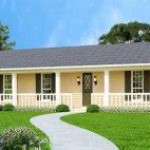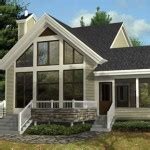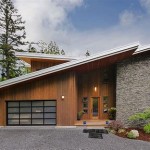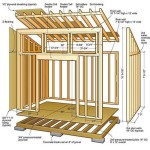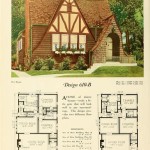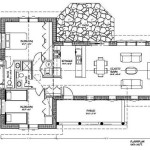Dual master house plans are architectural designs featuring two separate master bedrooms, each with its own private bathroom, often intended for distinct occupants like multi-generational families, siblings, or adult caregivers. They provide homeowners the flexibility, space, and privacy to accommodate diverse lifestyles and needs.
For instance, a family with elderly parents may opt for a dual master house plan to ensure their loved ones have a comfortable and accessible living space while maintaining their independence. Shared common areas and the proximity of the second master bedroom allow for convenient caregiving and social interaction.
Moving forward, we delve into the intricate details and considerations of dual master house plans, exploring their advantages and disadvantages, various configurations, and the factors to evaluate when designing or choosing such a home.
Here are 8 important considerations about dual master house plans:
- Flexibility for diverse needs
- Privacy for multiple occupants
- Aging-in-place considerations
- Multi-generational living
- Resale value implications
- Efficient use of space
- Customization options
- Zoning and building code compliance
These factors play a crucial role in designing or selecting a dual master house plan that meets your specific requirements.
Flexibility for diverse needs
Dual master house plans offer exceptional flexibility to accommodate a wide range of occupant needs and living situations. Whether it’s multi-generational living, accommodating guests, aging-in-place, or providing separate spaces for adult children or extended family members, these plans provide the versatility to adapt to changing circumstances and preferences.
For multi-generational families, dual master suites allow grandparents or adult children to have their own private space while still being part of the family home. This arrangement fosters independence and privacy while promoting intergenerational bonding.
Dual master bedrooms can also cater to individuals with different sleep schedules, work patterns, or health conditions. Parents with young children may appreciate having a separate sleeping area from their kids, while shift workers or those with sleep disturbances can benefit from having a dedicated and undisturbed retreat.
Moreover, dual master suites provide flexibility for homeowners who frequently host guests or extended family members. The second master suite can serve as a private and comfortable accommodation for visitors, ensuring their privacy and comfort while maintaining the primary bedroom as a sanctuary for the homeowners.
In summary, dual master house plans provide homeowners with the flexibility to meet diverse needs, adapt to changing lifestyles, and accommodate a variety of occupants comfortably and conveniently.
Privacy for multiple occupants
Dual master house plans prioritize privacy for multiple occupants, ensuring each individual has their own personal space and sanctuary.
- Separate sleeping quarters: Dual master suites provide separate sleeping areas, allowing occupants to retire to their own private bedrooms at the end of the day. This separation ensures undisturbed sleep and privacy, especially important for individuals with different sleep schedules or habits.
- En-suite bathrooms: Each master suite typically includes an en-suite bathroom, complete with a toilet, sink, and shower or bathtub. This private bathroom eliminates the need to share facilities with other occupants, ensuring privacy and convenience.
- Walk-in closets: Many dual master suites feature walk-in closets, providing ample storage space for personal belongings. These private closets allow occupants to maintain their privacy and organization without encroaching on shared spaces.
- Separate entrances and exits: Some dual master house plans incorporate separate entrances and exits for each master suite. This design element further enhances privacy by allowing occupants to come and go without disturbing others in the household.
Overall, dual master house plans are meticulously designed to provide multiple occupants with the privacy they need to live comfortably and independently within the same household.
Aging-in-place considerations
Dual master house plans can be thoughtfully designed to support aging-in-place, allowing elderly occupants to maintain their independence, safety, and comfort as they age.
- Accessible design: Dual master house plans can incorporate accessible features such as wider doorways, ramps, and grab bars to accommodate occupants with mobility challenges. These modifications ensure easy and safe movement throughout the home.
- Single-level living: Some dual master house plans offer single-level living, eliminating the need for stairs and providing convenience and safety for elderly occupants. This design allows them to navigate their living space effortlessly and reduces the risk of falls.
- Universal design: Universal design principles can be applied to dual master house plans to create a home that is accessible and comfortable for people of all ages and abilities. This includes features such as lever door handles, adjustable countertops, and roll-in showers.
- Proximity to essential spaces: Dual master house plans can be designed to position the master suites near essential areas such as the kitchen, living room, and laundry room. This proximity reduces the distance elderly occupants need to travel and enhances their daily convenience.
By considering aging-in-place principles, dual master house plans can provide a safe, comfortable, and supportive living environment for elderly occupants, allowing them to age with dignity and independence.
Multi-generational living
Dual master house plans are ideally suited for multi-generational living arrangements, where multiple generations of a family reside under one roof. These plans provide separate and private living spaces for each generation, while also fostering family togetherness and intergenerational connections.
Multi-generational living offers numerous benefits. Grandparents can play an active role in their grandchildren’s lives, providing care, support, and wisdom. Parents can benefit from the assistance of grandparents in childcare, allowing them to pursue careers or personal interests. Additionally, multi-generational living can strengthen family bonds and create a sense of belonging for all members.
Dual master house plans thoughtfully address the unique needs of multi-generational families. Each master suite provides privacy and independence for grandparents or adult children, allowing them to maintain their own routines and schedules. Shared common areas, such as the kitchen, living room, and dining room, serve as gathering spaces for family meals, activities, and celebrations.
When designing a dual master house plan for multi-generational living, it is essential to consider factors such as accessibility, privacy, and shared spaces. Wide doorways, ramps, and grab bars can enhance accessibility for elderly occupants. Separate entrances and exits for each master suite ensure privacy, while shared common areas provide opportunities for family interaction and togetherness. By carefully planning the layout and amenities, dual master house plans can create a harmonious and comfortable living environment for multi-generational families.
In conclusion, dual master house plans offer a practical and flexible solution for multi-generational living. They provide separate and private spaces for each generation, while also promoting family unity and intergenerational connections. By considering the unique needs of multi-generational families, dual master house plans can create a comfortable and supportive living environment for all members.
Resale value implications
The resale value implications of dual master house plans are multifaceted and depend on various factors such as the local real estate market, the specific design of the home, and the target buyer profile.
In some markets, dual master house plans may be highly sought after and command a premium price. Families with multiple generations living under one roof, or buyers who desire separate and private living spaces for guests or extended family members, may find these plans particularly appealing. In such markets, dual master house plans can potentially increase the resale value of the property.
However, in other markets, dual master house plans may not be as desirable. Buyers who prefer more traditional floor plans or who do not have a need for separate master suites may be less inclined to purchase a home with this type of layout. Additionally, if the dual master suites are not designed thoughtfully, they may compromise the overall flow and functionality of the home, which could negatively impact its resale value.
To maximize the resale value of a dual master house plan, it is crucial to consider the target buyer profile and design the home accordingly. Incorporating features that appeal to a wide range of buyers, such as open and spacious floor plans, ample storage space, and energy-efficient amenities, can enhance the home’s overall value and appeal.
Overall, the resale value implications of dual master house plans are complex and market-dependent. By carefully considering the local real estate market, the specific design of the home, and the target buyer profile, homeowners can make informed decisions that maximize the resale value of their property.
Efficient use of space
Dual master house plans are renowned for their efficient use of space, allowing homeowners to maximize functionality and comfort without compromising on privacy and individual space.
- Optimized layouts: Dual master house plans are meticulously designed to optimize the use of available space. The placement of rooms, hallways, and common areas is carefully considered to minimize wasted space and create a cohesive flow throughout the home.
- Multi-purpose rooms: To further enhance space efficiency, dual master house plans often incorporate multi-purpose rooms that can serve various functions. For example, a guest room can double as a home office or a playroom for children.
- Shared spaces: Dual master house plans often feature shared spaces, such as a family room, dining room, or kitchen, that are centrally located and accessible to all occupants. This design approach eliminates the need for multiple, dedicated spaces for each individual, maximizing space utilization.
- Built-in storage: Ample built-in storage solutions, such as closets, cabinets, and shelves, are strategically incorporated throughout dual master house plans. This reduces clutter and optimizes usable space, creating a sense of order and spaciousness.
By thoughtfully considering space efficiency, dual master house plans provide homeowners with comfortable and functional living environments that meet the needs of multiple occupants without sacrificing individual privacy or the overall aesthetic appeal of the home.
Customization options
Dual master house plans offer a high degree of customization to cater to the unique needs and preferences of homeowners.
- Layout and design: Homeowners can work with architects and designers to create a custom layout that meets their specific requirements. This includes the number and size of bedrooms, bathrooms, and common areas, as well as the overall flow and functionality of the home.
- Finishes and materials: Dual master house plans allow for a wide range of customization in terms of finishes and materials. Homeowners can choose from a variety of flooring options, cabinetry styles, countertops, and fixtures to create a home that reflects their personal taste and style.
- Smart home features: Dual master house plans can be equipped with the latest smart home features to enhance convenience, security, and energy efficiency. Homeowners can opt for features such as smart lighting, automated thermostats, and voice-activated control systems.
- Outdoor living spaces: Customization extends to outdoor living spaces as well. Homeowners can design patios, decks, and outdoor kitchens to create inviting and functional areas for relaxation and entertainment.
By embracing the customization options available in dual master house plans, homeowners can create a home that is tailored to their lifestyle, needs, and aspirations.
Zoning and building code compliance
Zoning laws and building codes play a crucial role in the design and construction of dual master house plans. Zoning laws determine how land can be used, including the allowable types of buildings and their placement on the property. Building codes establish minimum standards for the construction and safety of buildings.
When designing a dual master house plan, it is essential to ensure compliance with local zoning laws. This includes verifying that the plan meets the minimum lot size, setback requirements, and building height restrictions. Failure to comply with zoning laws can result in delays or even denial of building permits.
Building codes also impact the design of dual master house plans. These codes specify requirements for structural integrity, fire safety, accessibility, and energy efficiency. Adherence to building codes is crucial to ensure the safety and habitability of the home. Architects and builders must carefully consider these codes during the design and construction process.
In some cases, dual master house plans may require variances or special permits from local authorities. Variances are exceptions to zoning laws that allow for deviations from the standard requirements. Special permits may be necessary for specific features or uses that are not typically allowed under zoning laws, such as home businesses or accessory dwelling units.
By carefully considering zoning and building code compliance, homeowners and builders can ensure that their dual master house plans meet all legal requirements and create safe, habitable, and code-compliant homes.










Related Posts

